Celebrating the 220th Anniversary of the Wold Newton Event
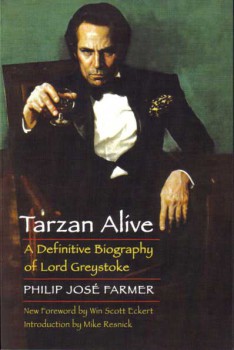
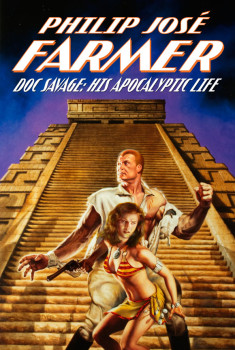 I have never disguised the fact that my fiction as well as much of my reading selections have been influenced by Wold Newton scholars. Whether one enjoys delving into the deeper world of holistic literary theories or not, there is so much information to be mined and speculation to consider that one could spend a lifetime devouring all of it. One of the foremost Wold Newton scholars active today, Win Scott Eckert today launches a new website on this, the 220th anniversary of the Wold Newton Event. woldnewtonfamily.com was created to provide “accurate and factual information on the canonical works by Philip José Farmer and on deuterocanonical works authorized by Mr. Farmer or his Literary Estate.” The following article defining what exactly is a Wold Newton tale was co-authored by Mr. Eckert with his fellow distinguished scholar and continuation author, Christopher Paul Carey. Thank you to John O’Neill for kindly allowing me to reprint their work here in commemoration of this important day for Wold Newtonians.
I have never disguised the fact that my fiction as well as much of my reading selections have been influenced by Wold Newton scholars. Whether one enjoys delving into the deeper world of holistic literary theories or not, there is so much information to be mined and speculation to consider that one could spend a lifetime devouring all of it. One of the foremost Wold Newton scholars active today, Win Scott Eckert today launches a new website on this, the 220th anniversary of the Wold Newton Event. woldnewtonfamily.com was created to provide “accurate and factual information on the canonical works by Philip José Farmer and on deuterocanonical works authorized by Mr. Farmer or his Literary Estate.” The following article defining what exactly is a Wold Newton tale was co-authored by Mr. Eckert with his fellow distinguished scholar and continuation author, Christopher Paul Carey. Thank you to John O’Neill for kindly allowing me to reprint their work here in commemoration of this important day for Wold Newtonians.
A Wold Newton tale must involve a character whom Philip José Farmer identified as a member of the Wold Newton Family, and/or it must add to our knowledge of the secret history that Farmer uncovered, which has come to be known as the “Wold Newton Universe.” It can also be a crossover story, but that is not required.
In recent years, generic crossover stories have come to be mistakenly referred to as “Wold Newton” tales. A mere crossover is not enough. With this in mind, a primer on Farmer’s discoveries regarding the Wold Newton Family is in order.
The Wold Newton Family takes its name from the cosmic event that spawned it. On December 13, 1795, at 3:00 p.m., a meteor came plunging to the earth, landing near the English village of Wold Newton. [The meteorite is named after the Wold Cottage, the house owned by Edward Topham, who was a poet, playwright, landowner, and local magistrate. Apparently Magistrate Topham was instrumental in the Wold Cottage meteorite’s role in promoting worldwide acceptance of the fact that some stones are not of this Earth. The Wold Cottage is still privately owned, and is currently the site of an excellent bed and breakfast; nearby is the Wold Top Brewery, where one can procure the local brew, Falling Stone Bitter.] The impact site became part of the local folklore in the countryside of the Yorkshire Wolds in the East Riding of Yorkshire.
Pieces of the Wold Cottage meteorite are held in the Natural History Museum in London, and in 1799, Edward Topham built a brick monument to commemorate the event:
Here
On this Spot, Dec 13th, 1795
fell from the Atmosphere
AN EXTRAORDINARY STONE
In Breadth 28 inches
In Length 30 inches
and
Whose Weight was 56 Pounds
THIS COLUMN
In Memory of it
was erected by
EDWARD TOPHAM
1799
History also records that several people observed the object in the sky. “Topham’s shepherd was within 150 yards of the impact and a farmhand named John Shipley was so near that he was forcibly struck by mud and earth as the falling meteorite burrowed into the ground.” [fernlea.tripod.com/woldcottage.html] A contemporaneous account observes that:
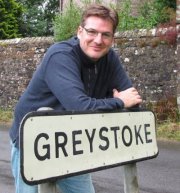
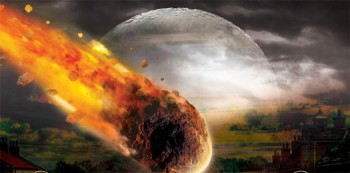 In the afternoon of the 13th of December, 1795, near the Wold Cottage, noises were heard in the air, by various persons, like the report of a pistol; or of guns at a distance at sea; though there was neither any thunder or lightning at the time:-two distinct concussions of the earth were said to be perceived:-and an hissing noise, was also affirmed to be heard by other persons, as of something passing through the air;-and a labouring man plainly saw (as we are told) that something was so passing; and beheld a stone, as it seemed, at last, (about ten yards, or thirty feet, distant from the ground) descending, and striking into the ground, which flew up all about him: and in falling, sparks of fire, seemed to fly from it.
In the afternoon of the 13th of December, 1795, near the Wold Cottage, noises were heard in the air, by various persons, like the report of a pistol; or of guns at a distance at sea; though there was neither any thunder or lightning at the time:-two distinct concussions of the earth were said to be perceived:-and an hissing noise, was also affirmed to be heard by other persons, as of something passing through the air;-and a labouring man plainly saw (as we are told) that something was so passing; and beheld a stone, as it seemed, at last, (about ten yards, or thirty feet, distant from the ground) descending, and striking into the ground, which flew up all about him: and in falling, sparks of fire, seemed to fly from it.
Afterwards he went to the place, in company with others; who had witnessed part of the phænomena, and dug the stone up from the place, where it was buried about twenty-one inches deep.
It smelt, (as it is said,) very strongly of sulphur, when it was dug up: and was even warm, and smoked:-it was found to be thirty inches in length, and twenty-eight and a half inches in breadth. And it weighed fifty-six pounds.
(Remarks Concerning Stones Said To Have Fallen from the Clouds, Both in These Days, and in Antient Times by Edward King, ESQ. F.R.S. and F.A.S, 1796.)
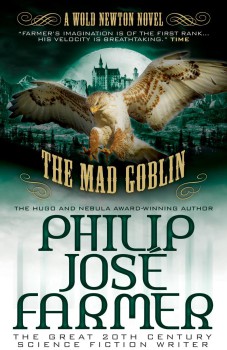
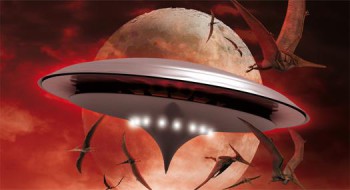 What many historians fail to adequately record is the presence of eighteen other persons in the immediate vicinity at the time of the Wold Newton meteor strike. We know about these eighteen people through the extraordinary and singular work of one historian. This historian, in fact, engaged in a rather in-depth treatment of the subject in two scholarly biographical tomes. However, despite the fact that this historian’s biographies are often appropriately shelved in the Biography section of libraries, his revelations are generally regarded as fictional.
What many historians fail to adequately record is the presence of eighteen other persons in the immediate vicinity at the time of the Wold Newton meteor strike. We know about these eighteen people through the extraordinary and singular work of one historian. This historian, in fact, engaged in a rather in-depth treatment of the subject in two scholarly biographical tomes. However, despite the fact that this historian’s biographies are often appropriately shelved in the Biography section of libraries, his revelations are generally regarded as fictional.
The historian to whom we refer, of course, is Philip José Farmer, and the biographies of which we speak are Tarzan Alive: A Definitive Biography of Lord Greystoke (1972) and Doc Savage: His Apocalyptic Life (1973). In the course of his researches into the life of Lord Greystoke, Farmer extensively traced the jungle lord’s ancestry, and came to discover the ape-man was closely related to several other august historical personages. The nexus of this relationship was the Wold Cottage meteor strike in 1795.
As Farmer uncovered, seven couples and their coachmen “were riding in two coaches past Wold Newton, Yorkshire… A meteorite struck only twenty yards from the two coaches… The bright light and heat and thunderous roar of the meteorite blinded and terrorized the passengers, coachmen, and horses… They never guessed, being ignorant of ionization, that the fallen star had affected them and their unborn.” (Tarzan Alive, Addendum 2, pp. 247-248.)
The eighteen present were:
Coach Passengers (14)
- John Clayton, 3rd Duke of Greystoke, and his wife, Alicia Rutherford – ancestors of the jungle lord
- Sir Percy Blakeney, and his (second) wife, Alice Clarke Raffles – Blakeney is from Baroness Emmuska Orczy’s The Scarlet Pimpernel and sequels
- Fitzwilliam Darcy, and his wife, Elizabeth Bennet – from Jane Austen’s Pride and Prejudice
- George Edward Rutherford (the 11th Baron Tennington), and his wife, Elizabeth Cavendish – ancestors of Professor George Edward Challenger, from The Lost World by Edward Malone, edited for publication by Sir Arthur Conan Doyle
- Honoré Delagardie, and his wife, Philippa Drummond – ancestors of Hugh “Bulldog” Drummond from H. C. “Sapper” McNeile’s (and later Gerard Fairlie’s) novels
- Dr. Siger Holmes, and his wife, Violet Clarke – ancestors of Sherlock Holmes, from the stories and novels by John H. Watson, M.D., edited for publication by Sir Arthur Conan Doyle
- Sir Hugh Drummond and his wife, Lady Georgia Dewhurst – ancestors of Hugh “Bulldog” Drummond from H. C. “Sapper” McNeile’s (and later Gerard Fairlie’s) novels
Coachmen (4)
- Louis Lupin – ancestor of Arsène Lupin, from novels and stories by Maurice Leblanc
- Albert Lecoq – ancestor of Monsieur Lecoq, from the novels by Émile Gaboriau
- Albert Blake – ancestor of Sexton Blake, from the stories by Harry Blythe and countless others
•1 unnamed by Farmer
The meteor’s ionized radiation caused a genetic mutation in those present, endowing many of their descendants with extremely high intelligence and strength. As Farmer stated, the meteor strike was
the single cause of this nova of genetic splendor, this outburst of great detectives, scientists, and explorers of exotic worlds, this last efflorescence of true heroes in an otherwise degenerate age.
– Tarzan Alive, Addendum 2, pp.230-231.
Of course, not all the Wold Newton Family members were heroes. Some turned the genetic advantages with which they had been blessed toward decidedly nefarious pursuits.
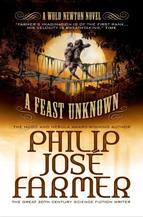
 In addition to the jungle lord and the man of bronze, Farmer concluded that influential people whose lives were chronicled in popular literature were part of the Wold Newton Family, including Solomon Kane (a pre-meteor strike ancestor); Captain Blood (a pre-meteor strike ancestor); The Scarlet Pimpernel (present at meteor strike); Fitzwilliam Darcy and his wife, Elizabeth Bennet (present at meteor strike); Sherlock Holmes and his nemesis Professor Moriarty (aka Captain Nemo); Phileas Fogg; Monsieur Lecoq; The Time Traveller; Allan Quatermain; A. J. Raffles; Professor Challenger; Arsène Lupin; Bulldog Drummond and his archenemy, Carl Peterson; the evil Fu Manchu and his adversary, Sir Denis Nayland Smith; Sir Richard Hannay; G-8; Lord Peter Wimsey; The Shadow; Sam Spade; Doc Savage’s friend and associate Monk Mayfair, his cousin Pat Savage, and his daughter Patricia Wildman; The Spider; Nero Wolfe; Mr. Moto; The Avenger; Philip Marlowe; James Bond; Lew Archer; Travis McGee; and many more.
In addition to the jungle lord and the man of bronze, Farmer concluded that influential people whose lives were chronicled in popular literature were part of the Wold Newton Family, including Solomon Kane (a pre-meteor strike ancestor); Captain Blood (a pre-meteor strike ancestor); The Scarlet Pimpernel (present at meteor strike); Fitzwilliam Darcy and his wife, Elizabeth Bennet (present at meteor strike); Sherlock Holmes and his nemesis Professor Moriarty (aka Captain Nemo); Phileas Fogg; Monsieur Lecoq; The Time Traveller; Allan Quatermain; A. J. Raffles; Professor Challenger; Arsène Lupin; Bulldog Drummond and his archenemy, Carl Peterson; the evil Fu Manchu and his adversary, Sir Denis Nayland Smith; Sir Richard Hannay; G-8; Lord Peter Wimsey; The Shadow; Sam Spade; Doc Savage’s friend and associate Monk Mayfair, his cousin Pat Savage, and his daughter Patricia Wildman; The Spider; Nero Wolfe; Mr. Moto; The Avenger; Philip Marlowe; James Bond; Lew Archer; Travis McGee; and many more.
Farmer’s researches, uncovering the cosmic explanation for the almost superhuman nature and abilities of these amazing men and women, heroes and villains, are meticulous, well-sourced, and representative of all his historical endeavors. He not only studied the jungle lord’s life, but he actually met and interviewed the ape-man himself, after spending uncounted hours poring over Burke’s Peerage to uncover his real name, titles, arms, and forebears. He applied a similar depth of focus when researching the life of Doc Savage, discovering Doc’s real name, ancestors, and current relatives, as well as the family arms.
After writing the two biographies, Farmer continued to chronicle previously unrevealed exploits of Wold Newton Family members in novels and short stories; often these tales have been mistaken for fiction, but they are entirely consistent with the information he had already uncovered, and many are similarly sourced from newly discovered, and unpublished, manuscripts and diaries.
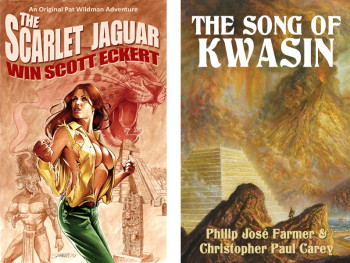 Among the first of these was The Adventure of the Peerless Peer, edited by Farmer in 1974 from Dr. John H. Watson’s unpublished manuscript. Another, The Other Log of Phileas Fogg, was first published in 1973 (reissued by Titan Books in 2012), and derived from Phileas Fogg’s secret notes.
Among the first of these was The Adventure of the Peerless Peer, edited by Farmer in 1974 from Dr. John H. Watson’s unpublished manuscript. Another, The Other Log of Phileas Fogg, was first published in 1973 (reissued by Titan Books in 2012), and derived from Phileas Fogg’s secret notes.
Although Farmer’s Time’s Last Gift (1972; revised 1977) and the related Khokarsa trilogy—Hadon of Ancient Opar (1974), Flight to Opar (1976), and The Song of Kwasin (2012; coauthored with Christopher Paul Carey)—are set in prehistoric times, they also recount the real-life histories of Wold Newton Family members. This might at first seem to be a contradiction, since the Wold Cottage meteor strike that gave rise to the Wold Newton Family occurred in 1795 A.D. whereas the events of Time’s Last Gift and the Khokarsa trilogy take place circa 12,000 B.C. and 10,000 B.C. respectively.
The answer to this seeming paradox, however, may be found in Time’s Last Gift. In that novel, a man named John Gribardsun travels back in time as a member of an anthropological expedition from the year 2070 A.D. to 12,000 B.C. He appears in Hadon of Ancient Opar under the identity of Sahhindar, the Gray-Eyed Archer God, also known as the god of plants, bronze, and Time. As a member of the Wold Newton Family, Gribardsun introduced the mutated genes of his lineage to the prehistoric peoples of Khokarsa and other lands, and since both Hadon of Opar and Kwasin of Dythbeth—the heroes of the Khokarsa trilogy—can count him as an ancestor, this means they themselves are both members of the Wold Newton Family, despite having been born 12,000 years before the meteor fell to earth near Wold Newton, Yorkshire in December 1795.
And thus the Wold Newton Family enters prehistory.
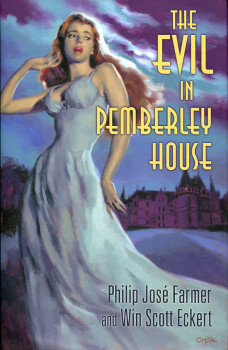
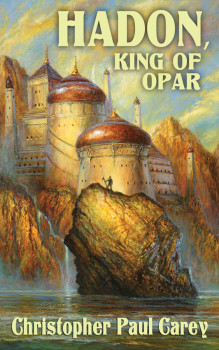 But who exactly is John Gribardsun? Farmer leaves plenty of clues to his true identity in Time’s Last Gift, although such hints are neither overbearing nor do they distract from the novel’s compelling narrative, and the reader should not feel embarrassed at having missed them. In fact, the author buried them deep for a reason. He could not risk the world knowing the truth, and, although he had come into an arrangement with “Gribardsun” to publish his memoirs in the guise of fiction, Farmer was honor-bound by the agreement to remain within certain very-well-defined parameters. Gribardsun had to ensure that the author would not reveal clues that might endanger him or his loved ones.
But who exactly is John Gribardsun? Farmer leaves plenty of clues to his true identity in Time’s Last Gift, although such hints are neither overbearing nor do they distract from the novel’s compelling narrative, and the reader should not feel embarrassed at having missed them. In fact, the author buried them deep for a reason. He could not risk the world knowing the truth, and, although he had come into an arrangement with “Gribardsun” to publish his memoirs in the guise of fiction, Farmer was honor-bound by the agreement to remain within certain very-well-defined parameters. Gribardsun had to ensure that the author would not reveal clues that might endanger him or his loved ones.
For this reason, Farmer withheld publication of the novel’s epilogue until the revised edition of Time’s Last Gift appeared in 1977, by which time Gribardsun must have felt he had slipped far enough off the radar that no one could conceivably follow the clues to him or his family. This newly appended epilogue (also included in the Titan Books edition) revealed that the jungle lord whom Farmer called Gribardsun was married to a beautiful blonde named Jane. The reader should also consider the account in that novel of the Duke of Pemberley, the British peer who was born in 1872 and “raised in indeterminate circumstances” in the jungles of West Africa, and who was a member of the time travel expedition to 12,000 B.C. believes is one and the same as John Gribardsun. Incidentally, the 1872 birthdate serves as both a red herring and a clue to Gribardsun’s identity, as readers of Farmer’s Tarzan Alive: A Definitive Biography of Lord Greystoke are well aware.
Farmer continued his exploration of the Wold Newton Family in Ironcastle (1976), his translation and retelling of J.-H. Rosny Aîné’s L’Étonnant Voyage de Hareton Ironcastle(1922), which includes several prominent Wold Newton references. Farmer’s The Lavalite World (1977), the fifth entry in the World of Tiers series [following The Maker of Universes (1965), The Gates of Creation (1966), A Private Cosmos (1968), and Behind the Walls of Terra (1970) and itself followed by Red Orc’s Rage (1991) and More Than Fire (1993)], also solidly connects to the Wold Newton series. Here Farmer’s protagonist, Kickaha, aka Paul Janus Finnegan, is revealed to be closely related to both the aforementioned Phileas Fogg and to Hardin Blaze Fog, a relative of “the famous Confederate war hero and Western gunfighter Dustine ‘Dusty’ Edward Marsden Fog,” whose exploits were chronicled in fictionalized form by author J. T. Edson.
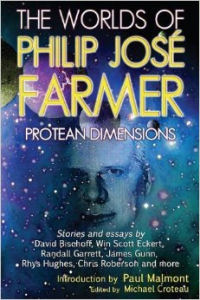
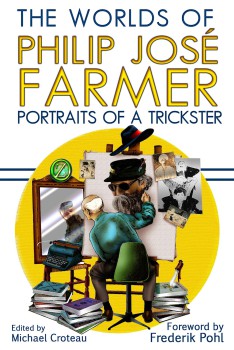 Farmer also wrote several Wold Newton short stories and pieces in the 1970s: “Skinburn,” “The Problem of the Sore Bridge—Among Others,” “The Freshman,” “After King Kong Fell,” “A Scarletin Study,” “The Doge Whose Barque Was Worse Than His Bight,” “The Obscure Life and Hard Times of Kilgore Trout,” “Extracts from the Memoirs of ‘Lord Greystoke,’” and others more peripherally connected to the series.
Farmer also wrote several Wold Newton short stories and pieces in the 1970s: “Skinburn,” “The Problem of the Sore Bridge—Among Others,” “The Freshman,” “After King Kong Fell,” “A Scarletin Study,” “The Doge Whose Barque Was Worse Than His Bight,” “The Obscure Life and Hard Times of Kilgore Trout,” “Extracts from the Memoirs of ‘Lord Greystoke,’” and others more peripherally connected to the series.
He also continued to write short biographical pieces, including “A Reply to ‘The Red Herring,’” “The Two Lord Ruftons,” “The Great Korak-Time Discrepancy,” “The Lord Mountford Mystery,” “From ERB to Ygg,” “A Language for Opar,” and “Jonathan Swift Somers III, Cosmic Traveller in a Wheelchair: A Short Biography by Philip José Farmer (Honorary Chief Kennel Keeper).” [These have been collected in Myths for the Modern Age: Philip José Farmer’s Wold Newton Universe, Win Scott Eckert, ed., MonkeyBrain Books, 2005.]
Farmer returned to the Wold Newton series in a big way in the 1990s, starting the decade with the authorized novel Escape from Loki: Doc Savage’s First Adventure (1991), and rounding it out with the authorized The Dark Heart of Time: A Tarzan Novel (1999). 2009 saw the publication of the Wold Newton series novel The Evil in Pemberley House, coauthored with Win Scott Eckert, and in 2012 the concluding novel of the Khokarsa trilogy, The Song of Kwasin, coauthored with Christopher Paul Carey, at last saw print.
Farmer passed away on February 25, 2009, after the completion of The Evil in Pemberley House and The Song of Kwasin but before publication.
In 2010, Wold Newton fiction was authorized by Farmer’s estate, and new stories based on his research appeared.
The Worlds of Philip José Farmer 1: Protean Dimensions, Michael Croteau, ed., Meteor House, 2010.
- “A Kick in the Side” by Christopher Paul Carey
- “Is He in Hell?” by Win Scott Eckert
The Worlds of Philip José Farmer 2: Of Dust and Soul, Michael Croteau, ed., Meteor House, 2011.
- “Kwasin and the Bear God” by Philip José Farmer and Christopher Paul Carey*
- “For the Articles” by Bradley H. Sinor
- “Into Time’s Abyss” by John Allen Small
The Worlds of Philip José Farmer 3: Portraits of a Trickster, Michael Croteau, ed., Meteor House, 2012.
- “The Last of the Guaranys” by Octavio Aragão & Carlos Orsi
- “The Wild Huntsman” by Win Scott Eckert
Exiles of Kho: A Tale of Lost Khokarsa by Christopher Paul Carey, Meteor House, 2012.
The Scarlet Jaguar, a Pat Wildman adventure by Win Scott Eckert, Meteor House, 2013.
Phileas Fogg and the War of Shadows by Josh Reynolds, Meteor House, 2014.
Hadon, King of Opar by Christopher Paul Carey, Meteor House, 2015.
Philip José Farmer’s novels of the Nine, A Feast Unknown (1969), Lord of the Trees (1970), and The Mad Goblin (1970) (all part of Titan Books’ Wold Newton series under the subheading “Secrets of the Nine — Parallel Universe”), present an interesting conundrum for followers of Farmer’s Wold Newton mythos, and may have also added to the impression among some readers that the Wold Newton biographies, novels, and stories are works of fiction. The books recount the ongoing battle of the ape-man Lord Grandrith and the man of bronze Doc Caliban against the Nine, a secret cabal of immortals bent on amassing power and manipulating the course of world events.
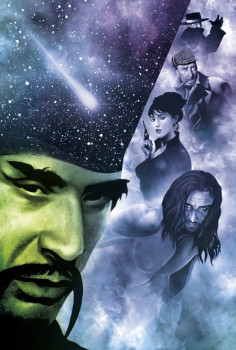
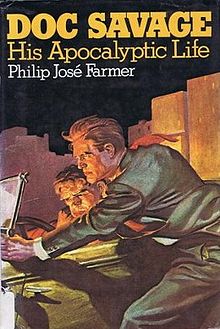 These novels are sourced from the memoirs of Lord Grandrith and Doc Caliban, and cover the exploits of Grandrith and Caliban. Grandrith is also a jungle lord, while Caliban is also a man of bronze. However, unlike cousins Lord Greystoke and Doc Wildman (the real name of the man whose exploits were published in pulp novels under the fictional name “Doc Savage”), Grandrith and Caliban are half-brothers. They share a common history that is not based on the Wold Newton meteor strike. One widely accepted explanation for the discrepancy is that Lord Grandrith and Doc Caliban exist in a universe that is parallel, but very similar, to the Wold Newton Universe. As described in Win Scott Eckert’s afterword to Titan Books’ new edition of The Mad Goblin (“A Feast Revealed: A Chronology of Major Events Pertinent to Philip José Farmer’s Secrets of the Nine Series”), the alternate universe shares a common past with the Wold Newton Universe, but diverged from it circa 26,000 B.C.
These novels are sourced from the memoirs of Lord Grandrith and Doc Caliban, and cover the exploits of Grandrith and Caliban. Grandrith is also a jungle lord, while Caliban is also a man of bronze. However, unlike cousins Lord Greystoke and Doc Wildman (the real name of the man whose exploits were published in pulp novels under the fictional name “Doc Savage”), Grandrith and Caliban are half-brothers. They share a common history that is not based on the Wold Newton meteor strike. One widely accepted explanation for the discrepancy is that Lord Grandrith and Doc Caliban exist in a universe that is parallel, but very similar, to the Wold Newton Universe. As described in Win Scott Eckert’s afterword to Titan Books’ new edition of The Mad Goblin (“A Feast Revealed: A Chronology of Major Events Pertinent to Philip José Farmer’s Secrets of the Nine Series”), the alternate universe shares a common past with the Wold Newton Universe, but diverged from it circa 26,000 B.C.
The parallel universe theory is supported by Farmer’s fragment of a fourth Nine novel, The Monster on Hold. The fragment was introduced by Farmer at the 1983 World Fantasy Convention, and was published in the convention program. [Reprinted in Myths for the Modern Age: Philip José Farmer’s Wold Newton Universe, Win Scott Eckert, ed., MonkeyBrain Books, 2005; and in Pearls from Peoria, Paul Spiteri, ed., Subterranean Press, 2006. An additional fragment of the novel, entitled “Down to Earth’s Centre,” has since been located in Mr. Farmer’s “Magic Filing Cabinet,” and was published in Farmerphile: The Magazine of Philip José Farmer no. 12, Win Scott Eckert and Paul Spiteri eds., April 2008.] During a series of adventures in which Doc Caliban continues to battle the forces of the Nine, he “begins to suffer from a recurring nightmare and has dreams alternating with these in which he sees himself or somebody like himself. However, this man, whom he calls The Other, also at times in Caliban’s dreams seems to be dreaming of Caliban.”
Later, when Caliban has descended below the surface into a labyrinthine series of miles-deep caverns in search of the extra-dimensional entity known as Shrassk, a being that had been invoked and then imprisoned by the Nine in the eighteenth century, Caliban has another vision of The Other: “The Other was standing at the entrance to a cave. He was smiling and holding up one huge bronze-skinned hand, two fingers forming a V.”
“One huge bronze-skinned hand.”
The Other is Doc Wildman, communicating to Caliban across the dimensional void.
The presence of Doc Wildman in the caverns deep beneath New England, at the gate held open by the Shrassk entity, as observed by Doc Caliban across the dimensional nexus, strongly indicates that there also exists a secret organization of the Nine in Farmer’s universe (i.e., Wildman and Greystoke’s dimension, known as the Wold Newton Universe). Since the two universes diverged circa 26,000 B.C., the Nine in each universe have some immortal members in common, members who were alive when the universes divided. “The Wild Huntsman” brings the two universes back together.
The Wold Newton Family is a group of heroic and villainous literary figures that science fiction author Philip José Farmer postulated belonged to the same genetic family. Some of these characters are adventurers, some are detectives, some explorers and scientists, some espionage agents, and some are evil geniuses. You can learn more by visiting <a href=”http:woldnewtonfamily.com“>woldnewtonfamily.com</a>.
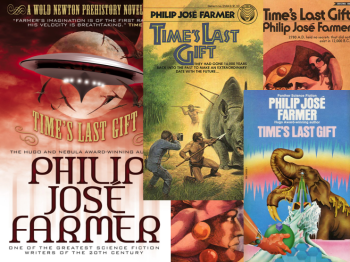
Very informative. Thanks, Bill!
Thanks as always for the support, Deuce. Although this article is the work of Win Scott Eckert and Christopher Paul Carey, I’m just “presenting” it for Black Gate Magazine courtesy of John O’Neill’s generous nature in supporting the Wold Newton anniversary.